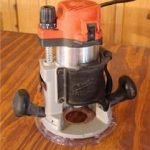Are you looking to add an elegant and functional touch to your woodworking projects? Learn how to make half circle corners woodworking and elevate your creations with a classic yet modern design element. Half circle corners not only provide a unique aesthetic appeal but also serve practical purposes in furniture and decor, creating smooth edges that are both visually appealing and safe for everyday use.
In this article, we will explore the art of incorporating half circle corners into your woodworking projects. From understanding the appeal and functionality of half circle corners to providing a step-by-step guide on marking, measuring, cutting, shaping, and finishing these elegant curves, we have everything you need to know to master this woodworking technique.
Whether you’re a seasoned woodworker or just starting out, understanding how to create half circle corners can open up new creative possibilities for your projects. We’ll also provide design inspiration and troubleshooting tips to ensure that you achieve seamless and professional-looking results every time. So, let’s dive into the world of half circle corners in woodworking and unlock the potential of this versatile design element.
Tools and Materials Needed for Creating Half Circle Corners in Woodworking
When it comes to creating half circle corners in woodworking, it’s important to have the right tools and materials on hand to ensure a smooth and precise result. The key to achieving perfect half circle corners lies in using the proper equipment for marking, measuring, cutting, and shaping the wood. Here are the essential tools and materials needed for creating half circle corners in woodworking.
First and foremost, you will need a quality compass or a flexible curve ruler for accurately marking the half circles on your workpiece. A pencil or marking knife should also be included in your toolkit for making clear and precise markings. Additionally, having a measuring tape or ruler is crucial for ensuring that your half circle corners are symmetrical and consistent in size.
In terms of cutting and shaping the wood, a quality jigsaw or band saw will be necessary for cutting out the marked half circles from your workpiece. If you prefer more precision, a router with a circle-cutting jig attachment can also be used to achieve perfectly smooth half circle corners.
Sandpaper with various grits is essential for achieving smooth and seamless edges on your half circle corners. For finishing touches, wood stain or sealant may be required depending on the desired look of your woodworking project.
By having these tools and materials at your disposal, you will be well-equipped to tackle the process of creating flawless half circle corners in woodworking projects. The right equipment will not only make the process easier but also ensure a professional-looking result that will enhance the overall appeal of your woodworking project.
Step-by-Step Guide on Marking and Measuring for Half Circle Corners
Creating half circle corners in woodworking can add a unique and stylish touch to your projects. To successfully make half circle corners, it is important to have an understanding of the necessary measurements and markings. Here is a step-by-step guide on how to accurately mark and measure for half circle corners in woodworking:
1. Determine the radius: The first step in marking and measuring for half circle corners is determining the desired radius of the curve. This will depend on the specific project you are working on. Use a compass or a flexible curve ruler to create the half circle shape, ensuring that it meets your design specifications.
2. Marking the wood: Once you have determined the radius, use a pencil to mark the center point where you want the half circle corner to begin. Then, using your compass or flexible curve ruler, carefully mark out the curve onto the wood surface. Make sure to double-check your measurements and markings before proceeding.
3. Measuring for accuracy: After marking out the half circle shape, take precise measurements to ensure that all points along the curve are equidistant from the center point. This will help maintain symmetry and balance in your woodworking project.
By following these steps, you can successfully mark and measure for half circle corners in woodworking projects with precision and accuracy.
– Pro tip: Double-check all measurements and markings before cutting into the wood.
– Safety reminder: Always wear appropriate safety gear when working with woodworking tools.
– Practice on scrap wood first to perfect your technique before working on your actual project.
With these steps in mind, you are now equipped with valuable knowledge on how to make half circle corners in woodworking with confidence and accuracy.
Techniques for Cutting and Shaping Half Circle Corners in Woodworking
Half circle corners are a popular and versatile design element in woodworking projects. Whether you are making furniture, decorative items, or architectural features, half circle corners add a unique touch of elegance and sophistication. In this section, we will discuss the techniques for cutting and shaping half circle corners in woodworking.
When it comes to creating half circle corners, having the right tools is crucial. You will need a compass for drawing perfect half circles, a jigsaw or bandsaw for cutting the wood, and sandpaper for smoothing out the edges. Additionally, having a sturdy workbench with clamps to secure your wood piece is essential for safety and precision.
The first step in cutting and shaping half circle corners is to mark the area where you want the curve to start and end. Use a compass to draw an arc that creates the desired radius of your half circle corner. Once you have marked your wood piece, you can proceed with carefully cutting along the marked line using a jigsaw or bandsaw. It’s important to take your time and follow the marked line closely to ensure accuracy.
| Tools | Materials |
|---|---|
| Compass | Wood |
| Jigsaw/Bandsaw | Sandpaper |
By following these techniques and using the right tools, you can achieve perfectly shaped half circle corners in your woodworking projects. Remember to always prioritize safety when using power tools and take your time to ensure precision in your cuts.
Tips for Achieving Smooth and Seamless Half Circle Corners
Creating smooth and seamless half circle corners in woodworking can elevate the quality and visual appeal of your projects. Whether you are incorporating these corners into furniture, decorative items, or architectural elements, it’s important to pay attention to detail in order to achieve a professional finish. Here are some tips to help you achieve smooth and seamless half circle corners in your woodworking projects:
- Use the right tools: To ensure precision and smooth curves, invest in high-quality tools such as a compass, band saw, jigsaw, or scroll saw. Additionally, using sandpaper of varying grits will help you refine the edges of your half circle corners.
- Measure accurately: Before cutting or shaping your wood, carefully measure and mark the area where the half circle corner will be located. Using a pencil and ruler, ensure that your measurements are precise to avoid any unevenness in the curve.
- Practice good technique: When cutting or shaping your half circle corners, maintain a steady hand and take your time to work around the curve. If using a power tool, move slowly and steadily to prevent any jagged edges.
Implementing these tips will allow you to create half circle corners with a seamless finish that enhances the overall aesthetic of your woodworking projects. As you gain experience and practice these techniques, you’ll be able to consistently achieve smooth and precise results.
Remember that achieving smooth and seamless half circle corners in woodworking requires patience, attention to detail, and practice. By following these tips and refining your technique over time, you can confidently incorporate this design element into various woodworking projects with professional-looking results.
Finishing Touches
Once you have successfully marked, measured, cut, and shaped your half circle corners in woodworking, the next crucial step is to complete the finishing touches. Sanding, staining, and sealing the half circle corners will not only enhance their appearance but also ensure their durability and longevity.
Sanding
After cutting and shaping the half circle corners, it’s important to sand them to achieve a smooth and flawless finish. Start with a coarse-grit sandpaper to remove any rough edges or uneven surfaces. Gradually move on to finer-grit sandpapers to smoothen out the corners completely. Be sure to sand both the inside and outside of the half circle corners for a uniform appearance.
Staining
Staining your half circle corners can add depth and beauty to your woodworking project. Before applying any stain, make sure the wood is clean and free of any dust or debris from sanding. Choose a wood stain that complements the overall aesthetic of your project. Apply the stain evenly using a brush or cloth, making sure to follow the wood grain for a professional look.
Sealing
The final step in finishing your half circle corners is sealing them to protect against moisture, stains, and everyday wear and tear. Select a quality wood sealer or varnish that suits the type of wood you are using. Apply the sealer in smooth, even strokes, allowing it to dry completely between coats. Once sealed, your half circle corners will be not only beautiful but also well-protected for years to come.
By following these steps for sanding, staining, and sealing your half circle corners in woodworking projects, you can ensure that they look their best and stand the test of time.
Design Inspiration
When it comes to woodworking, incorporating half circle corners into your projects can add a unique and elegant touch. Whether you are working on furniture, cabinetry, or decorative pieces, half circle corners can bring a sense of sophistication and creativity to your work. In this section, we will explore some design inspiration and ideas for incorporating half circle corners into your woodworking projects.
Furniture
One of the most popular ways to incorporate half circle corners into woodworking projects is by using them in the design of furniture. From tables and chairs to cabinets and bookshelves, adding half circle corners can elevate the overall look of the piece. Consider using half circle corners on the edges of a table top or as decorative accents on the legs of a chair. These subtle touches can make a big impact on the aesthetic appeal of your furniture.
Decorative Accents
In addition to furniture, half circle corners can also be used as decorative accents in smaller woodworking projects. For example, you can create wooden boxes with half circle corner details for storage or display purposes. Additionally, you can incorporate half circle corners into picture frames, mirrors, or even wall art to add an eye-catching element to your home decor.
Architectural Details
For those working on more intricate woodworking projects, consider incorporating half circle corners into architectural details such as moldings, trim work, or even staircases. By adding these curved elements, you can create a sense of fluidity and elegance within the overall design of a space.
By exploring different ways to integrate half circle corners into your woodworking projects, you can unleash your creativity and take your craftsmanship to new heights. Whether it’s through furniture design, decorative accents, or architectural details, incorporating these curved elements will surely enhance the visual appeal and artistic value of your work.
Troubleshooting
When making half circle corners in woodworking, it’s important to be aware of the common challenges that may arise during the process. By understanding these challenges and learning how to overcome them, you can improve the quality of your woodworking projects and achieve seamless half circle corners.
One common challenge when making half circle corners is achieving precise and symmetrical measurements. This is crucial for ensuring that your half circle corners look balanced and professional. To overcome this challenge, it’s important to use a compass or a template to mark the exact center point of the curve. Additionally, double-check your measurements before cutting to avoid any inaccuracies.
Another challenge woodworkers may encounter is achieving clean and smooth cuts when shaping the half circle corners. Uneven or jagged edges can detract from the overall appearance of the project. To address this, it’s essential to use sharp and high-quality tools such as a jigsaw or band saw for cutting. Take your time and make slow, deliberate cuts to ensure precision.
Additionally, maintaining control when shaping the wood is crucial in achieving flawless half circle corners. Using too much force or moving too quickly can result in mistakes that are difficult to correct. It’s important to practice patience and precision, especially when working with curved edges.
Here are some other common challenges woodworkers might encounter when creating half circle corners:
- Wood splintering during cutting
- Uneven sanding leading to an inconsistent finish
- Difficulty in achieving a perfect fit when joining two curved pieces
By being aware of these potential challenges and following best practices for overcoming them, you can enhance your woodworking skills and create stunning projects with flawless half circle corners.
| Challenges | How to Overcome Them |
|---|---|
| Precise measurements | Use a compass or template for accurate marking; double-check measurements before cutting |
| Clean cuts | Use sharp tools; make slow, deliberate cuts for precision |
| Maintaining control | Practice patience and precision; avoid applying too much force or moving too quickly |
Conclusion
Incorporating half circle corners into woodworking projects can truly elevate the overall design and aesthetic appeal. Not only do they add a unique and eye-catching element, but they also provide functional benefits such as improved safety and durability. By mastering the tools, techniques, and tips for creating smooth half circle corners, woodworkers can enhance their craftsmanship and open up a world of creative possibilities.
Through careful marking and measuring, precise cutting and shaping, and meticulous finishing touches, woodworkers can achieve stunning half circle corners that bring a touch of sophistication to their projects. Whether it’s a tabletop, cabinet door, or decorative trim, the incorporation of half circle corners adds an unexpected yet elegant detail that sets a woodworking piece apart.
As with any woodworking technique, there may be challenges along the way when making half circle corners. However, by understanding common issues such as tearout or uneven curves and learning how to troubleshoot them effectively, woodworkers can confidently tackle projects that feature this distinctive design element. With dedication and practice, mastering how to make half circle corners in woodworking opens up countless creative opportunities for enhancing the beauty and functionality of woodworking projects.
Frequently Asked Questions
How Do You Make a Half Circle on Wood?
To make a half circle on wood, you can start by drawing the desired half circle shape on the wood using a compass or a template. Then, carefully cut along the line using a bandsaw, jigsaw, or coping saw.
How Do You Cut a Half Circle Groove in Wood?
Cutting a half circle groove in wood requires careful planning and precision. You can use a router with a half-circle cutting bit to carefully carve out the groove, ensuring that you have marked the starting and ending points accurately.
How Do You Cut a Circle in Half on a Table Saw?
Cutting a circle in half on a table saw involves setting up the proper equipment and taking safety precautions. You would typically use a miter gauge to guide the wood through the blade at the correct angle, ensuring that your fingers are kept well away from the cutting area during this process.

Hi everyone! I’m a woodworker and blogger, and this is my woodworking blog. In my blog, I share tips and tricks for woodworkers of all skill levels, as well as project ideas that you can try yourself.





